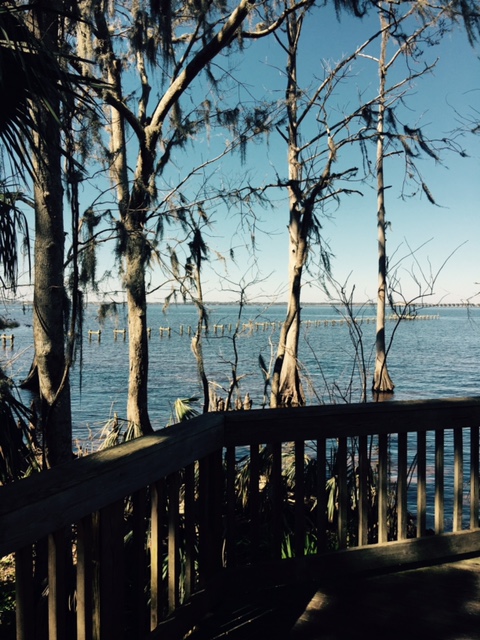
Jacksonville, FL – Tuesday was a balmy fall day in northeast Florida, with temperatures in the low ‘80s and a warm breeze throughout the afternoon. But before the local evening news was over, temperatures had dropped by 40 degrees or more.
The plummet was extreme, says a local scientist, even for northeast Florida, where a 30 degree swing not uncommon during the cooler months. And there’s more of it to come, he says.
“From 10 degrees above normal to 10 degrees below normal,” said marine biologist Dr. Quint White of Jacksonville University, “This is a good example of climate change.”
He went on to note that individual weather conditions cannot necessarily be linked to climate change, but the overall trend can. And that trend is for “extreme shifts” in weather and temperature, he said.
“We’re going to get more of these extremes,” he told members of the Jacksonville Waterways Commission at today’s meeting.
Commission Chair Councilman Al Ferraro, District 2, asked how the temperature change might affect the potential for algal blooms in the region.
White said the three factors determining algal blooms are the number of daylight hours, water temperature and the amount of nutrients in the water. Nighttime lows drive water temperature, he said, and the St. Johns River temperature has recently dropped from the upper 70s to the lower 70s. Manatees have already left the area, seeking warmer inland waters.
Algae was spotted in area waters in April of 2019, two months before blooms usually occur. Scientists were concerned because they’ve also recorded a big increase in phosphorus, which they believe to be caused by runoff from sewage sludge. Sewage sludge, also called “biosolids,” is treated to remove pathogens and metals, but the focus in the past hasn’t been on reducing nitrogen and phosphorus, which are known to trigger blooms. The Florida Department of Environmental Protection is reviewing the land-application rules for biosolids, which are prohibited by law from being dumped in south Florida, but not elsewhere. Currently, biosolids are disposed of on ranch lands in Brevard and Indian River County, runoff from which is believed to be the cause of the “alarming” increase in phosphorus, according to the State of the River Report by Jacksonville University, University of North Florida and Florida Southern College.
White also expressed some concern over the potential for fires in the area, due to the ongoing drought. He said the region normally gets 53 inches of rainfall annually, but is running 10 inches lower than usual this year.
“Anyone who’s been out in the woods can tell you it’s dry,” he said.
He also said there have been citizen reports of foam in Little Fishweir Creek and in the main stem. He said the city is investigating the source of the foam.


Leave a Reply